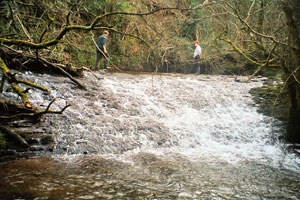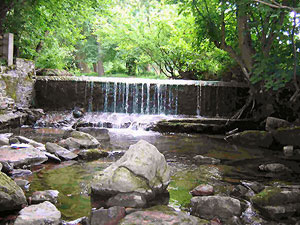Barriers to Fish Migration


The 1975 Salmon and Freshwater Fisheries Act (SAFFA) required that all new weirs and barriers were fitted with fish passes. This also applied to any substantial weir repairs. Our surveys revealed an enormous number of barriers to fish migration: weirs recent and old and massive timber jams on both rivers. This included the Wye's two largest tributaries: the Lugg (1982) and the Monnow (1917). By 1995, 50% of the Wye catchment* was blocked by culverts, debris dams, weirs and crossing points. Our survey of the Usk* (2004) showed that 28% of the river system was blocked by man-made obstructions, in addition to a number of impassable natural falls.
The number of juvenile fish a river can produce is proportional the size and quality of available habitat and that ultimately determines the size of the returning salmon run. In addition, barriers isolate fish populations so that when pollution or catastrophic natural episodes (such as extreme flood or drought) occur, fish and dependent wildlife cannot quickly re-colonise the affected area, leading to localised loss or even extinctions.
Restoring fish access remains the most important and by far the most cost effective river management action that can be undertaken on either river. For details of how we have been restoring fish access please see "Reconnecting the rivers". Of course, the biggest potential barrier of them all is The Severn Barrage.
(*excluding reservoirs)
